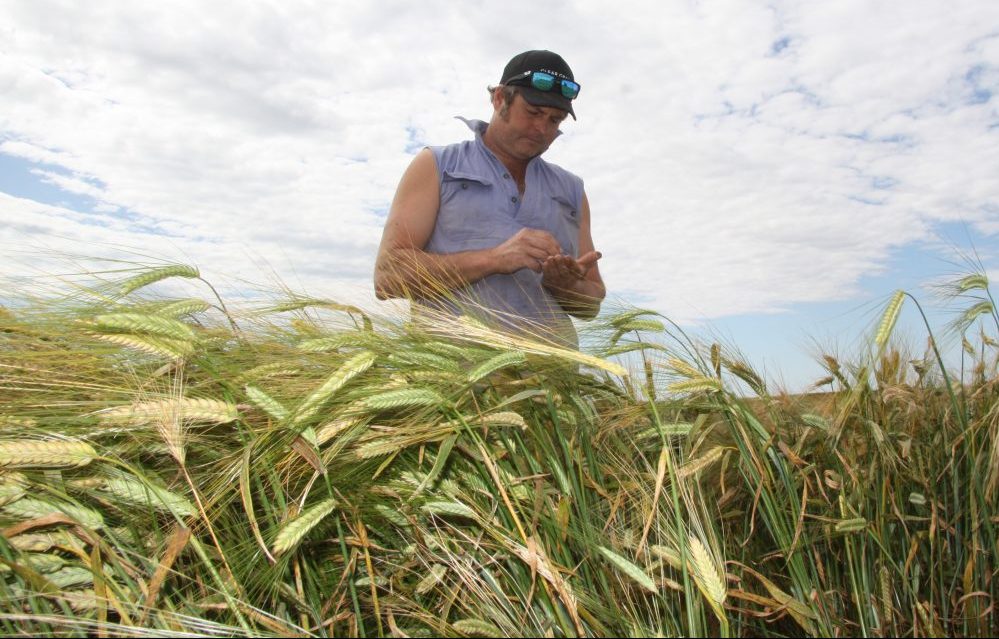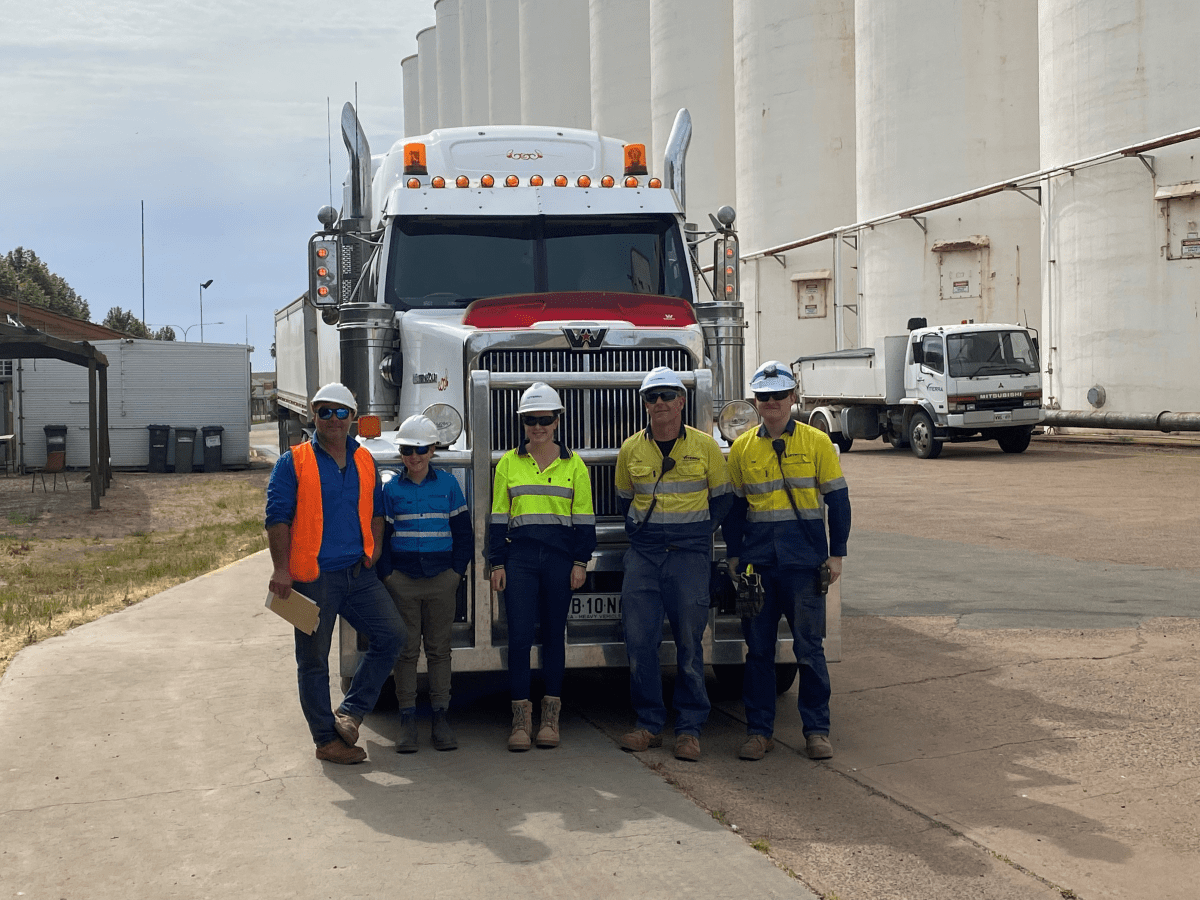
Alford grower Stewart Johns is expecting above-average yields for his crops including this paddock of Compass barley sown on SA’s Yorke Peninsula in mid-May.
HOPES are high for a record crop in South Australia, where perfectly timed in-crop rainfall has made up for a late start in some areas and a worryingly dry July.
The state’s major bulk handler, Viterra, and also T-Ports at Lucky Bay, yesterday received their first loads for the 2022-23 harvest, and growers including Stewart Johns at Alford on Yorke Peninsula are only a couple of weeks away from finding out how close yields are to their estimates.
Mr Johns is part of a family partnership that farms around 2500 hectares, with wheat, barley, canola and lentils its major cropping earners.
After around 10 years of continuous cropping, sheep have returned to the Johns’ operation.
They now graze on country which is rocky, fragile or prone to salinity, and brown or green manure crops also play a part.
“That’s good for the soil, and the sheep love it,” Mr Johns said.
What they graze can include cash crops, as well as field peas and vetch, and Mr Johns does not stick to a set rotation.
He has found “mixing it up” is a better option to keep on top of weeds, and minimise the risk of frost damage, despite westernmost paddocks being only 11 kilometres from the coast.
“I got burnt badly with frost two years in a row; that’s when I learnt you shouldn’t plant your crops in the same sequence across the whole farm.”
He said the result of his revised farming system is more even yields on paddocks, some of which have had problem areas taken out for a break from cropping.
“It’s fiddly, but I believe it’s worth it in the long term.”
On yield prospects, Mr Johns has a paddock of Compass barley which he believes could easily make 4 tonnes per hectare, well above average for the family’s Mallee-type country, and more if late tillers fill and get over the comb.
With urea at around $1400/t during the cropping season, it was neither affordable nor easy to apply during the dry July, and then a wet August and September.
“We planted this in May, which isn’t early; we go as early as Anzac Day in this district.”
The crop went in with phosphate at planting time, and then got 50kg/ha of urea as its only top dressing.
“Then it rained, so I got lucky.”
Protein is harder to gauge, and Mr Johns said his malting grades often deliver as feed because of protein above the maximum allowable, and invariably end up being shipped as food barley to Japan.

Ben Bussenschutt makes the first delivery for the 2022-23 harvest at Viterra’s Port Pirie site with son Fletch and Viterra employees Holly Gwynne, Troy Kiriacou and Tom Eberhard. Photo: Viterra
Harvest near on coast
Viterra took its first receival for the current harvest at Port Pirie with a load of BAR1 barley at its Port Pirie site from Mambray Creek grower Ben Bussenschutt.
“We’ve started harvest later than usual due to above-average rainfall in August and September which really helped and revived everything after a dry July,” Mr Bussenschutt said in a Viterra statement.
“I’m happy with how the crops are looking and with the prices where they’re at; it’s shaping up to be a very good year.
“Our first load had low screenings and a good test weight which is great, and I was stoked to bring my son along in the truck to Viterra for the first time.”
Viterra is currently forecasting the second-largest grain crop production on record for South Australia at 11.4 million tonnes (Mt).
This includes record wheat production of 6.85Mt, record canola and the second-largest barley and pulses crop.
With continuing favourable conditions, the crop is seen as having the potential to surpass the previous all-time record of 11.79Mt set in 2016-17.
ABARES most recent estimate released last month for SA wheat puts the 2022-23 crop at 4.84Mt, up from 4.7Mt in 2021-22.
However, considerable upside is seen as the ABARES number was issued before beneficial grain-filling rain feel last month.
Staffed and ready
Viterra chief operations officer James Murray said Viterra has been increasing its storage capacity in preparation for the harvest to meet growers’ needs.
“We’re expanding our storage capacity in the Western and Eastern regions through recommissioning closed bunkers, sheds and sites and building new bunkers,” Mr Murray said.
“With this investment in extra storage, our already existing 10Mt of capacity and very low carryover, Viterra is in a great position to receive the big harvest.
Viterra has added 150 jobs to its harvest workforce to boost the total number across its 55 sites to 1650 jobs.
Grain Central: Get our free news straight to your inbox – Click here



HAVE YOUR SAY